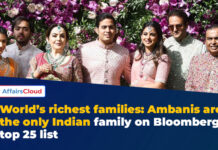
According to the latest report tracking the performance of the industry by Benori Knowledge, a new-age provider of specialised research and analytics solutions, the life insurance penetration rate in India has increased to 3.2% in December 2021 from 2.8% in December 2019.
- India is now the 10th largest Life Insurance market in the world almost at par with the global average of 3.3%. and is ahead of China (at 2.4%) and the United Kingdom (UK) (at 3%).
- From 2017 to 2022, the life insurance sector grew at a CAGR (Compound Annual Growth Rate) of 11%, and it is expected to grow at a CAGR of 9% during the next five years (2022-2027).
The instability of the COVID-19 pandemic underlined the need for consumers to invest in financial security products, one of which is life insurance.
Important Conclusions from The Report
i.The Insurance Regulatory and Development Authority of India (IRDAI) has relaxed its regulations for product approval and distribution, which is projected to result in increased penetration.
- Other contributing factors include the customization of products, a balanced channel mix, and company-level digitization initiatives.
ii.In a Benori survey, 70% of respondents claimed their main reason for buying insurance was to ensure their family’s financial security.
- While 91% of those surveyed claim that they no longer consider life insurance as an investment but rather as a form of protection.
5 Major Trends That Will Define the Next 5 Years
Benori identifies five major trends that will define the next five years, with the life insurance sector projected to rise by 9% between 2022 and 2027.
i.Despite the price increase, pure protection solutions will remain popular across all age groups and demographics. The Unit Linked Insurance Plan (ULIP) will also witness an uptrend.
ii.Companies will be inspired to look for novel methods to improve consumer engagement and experience by engaging with customers in more personal digital sales interactions and through hyper-personalization.
iii.Businesses will engage in Data Science and Analytics to better understand customer identities and demands.
iv.Ease of access and On-the-go Insurance will be crucial business goals for life insurers, and speed will become a differentiator.
v.The IRDAI’s relaxation of regulations is also likely to result in an increase in cooperation with market-specific Insurtech/Fintech companies.
Distribution Mix
i.Bancassurance is the principal channel through which consumers discover and get life insurance, accounting for 55% of the distribution share in 2022.
- The popularity of the bancassurance channel is related to customer confidence and existing relationships with banking institutions.
ii.Although the survey emphasises the importance of the agent, insurance companies come in second among the distribution channels.
iii.The distribution mix’s percentage of insurance agencies has been dropping, from 30% in 2017 to 23% in 2022.
iv.Direct-to-consumer (D2C) channels are outpacing the bancassurance market in terms of premium purchase growth.
Direct-To-Consumer (D2C) Channels
i.Although Direct-To-Consumer (D2C) life insurance distribution is still in its early stages (3%) in India, players like TATA AIA, SBI Life, and HDFC Life witnessed significant business growth as a result of D2C online distribution.
- Within this channel, TATA AIA, Kotak, and SBI Life have demonstrated impressive business growth of more than 45% from 2021.
ii.In comparison to 2021, ICICI Prudential Life Insurance reported a 7% growth, and HDFC Life had a 24% growth (including both HDFC direct online and PolicyBazaar).
iii.HDFC Life is the market leader in online distribution, with this channel accounting for 11% of its company’s revenues.
Rajasthan Tops in Health Insurance With 88% Cover
According to the most recent statistics on health insurance coverage collected by the National Family Health Survey (NFHS) in 2019-21, around 88% of Rajasthan households have at least one person covered by a health scheme or health insurance.
- Rajasthan claims to have the highest proportion of Indian households with health insurance or other financial schemes.
- Andhra Pradesh comes in second with 80%, followed by Goa (73%), Chhattisgarh (71%), and Telangana (69%).
Key Inferences from The Survey
i.According to the survey, India’s health insurance coverage is far from satisfactory.
ii.Over two-fifths (41%) of households have at least one member covered by a health insurance or finance scheme.
iii.When family members become ill, they are slightly more likely to go to the public sector for care (50%) than the private sector (48%).
iv.However, the percentage of households in Rajasthan that use government health facilities is pretty high.
- Only 26.4% of households in the state do not use a government health facility.
v.Government hospitals have seen an increase in patient traffic as a result of the health department’s free medical care and diagnostic tests programme.
vi.Some of the reasons people don’t use government healthcare services include: a lack of nearby facilities, inconvenient facility timings, and absence of health personnel.
vii.The percentage of households who do not use government health services is highest in Bihar (80%) and UP (75%), and the lowest (less than 5%) in Ladakh, Lakshadweep, and the Andaman & Nicobar Islands.
Recent Related News:
On 11th July 2022 Insurance Regulatory and Development Authority of India (IRDAI) set up two task forces to resolve issues between insurers and reinsurers. The task force will submit the reports in 3 weeks.
About Insurance Regulatory and Development Authority of India (IRDAI):
Chairman – Debasish Panda
Establishment – 1999
Headquarters – Hyderabad, Telangana




